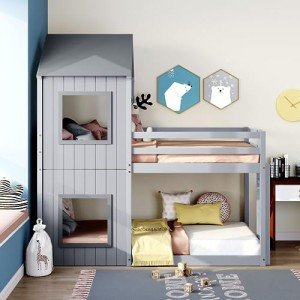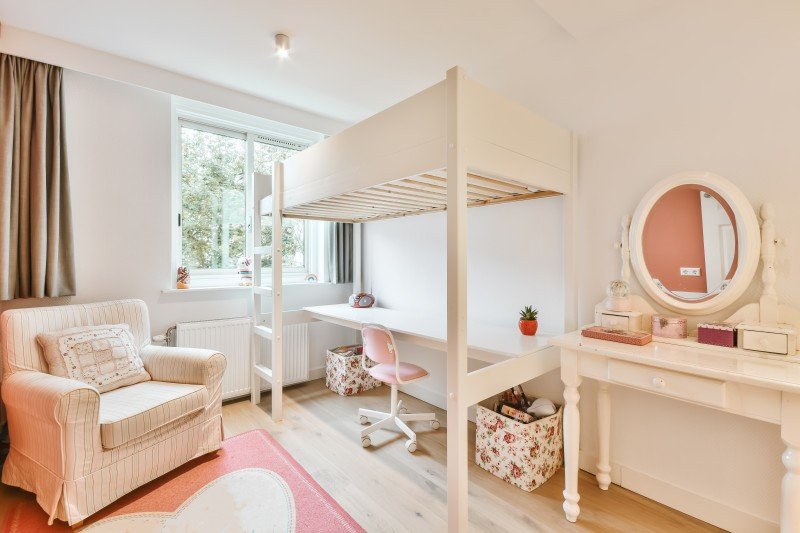
Adult Bunk Beds
Overview
-
Founded Date March 2, 1908
-
Sectors Purchasing & Procurement
-
Posted Jobs 0
Company Description
9 Lessons Your Parents Taught You About Bunk Bed For Kids
The Ultimate Guide to Bunk Beds for Kids: Safety, Styles, and Solutions
Bunk beds have long been a popular choice amongst moms and dads looking for to optimize space in their children’s bedrooms. With advantages that surpass their compact design, bunk beds use an enjoyable and functional sleeping plan while encouraging brother or sister bonding and cultivating imagination. In this comprehensive guide, we explore various elements of bunk beds for kids, consisting of security factors to consider, various designs offered, and recommendations for choosing the ideal one for your family.

Why Choose Bunk Beds?
Bunk beds are designed to stack one bed on top of another, making use of vertical space to develop more room for play and storage. They are especially helpful for households with numerous children or minimal bedroom space. In addition, they offer an adventurous sleeping environment that kids typically enjoy.
Secret Advantages of Bunk Beds:
- Space-saving style: Ideal for small rooms or shared areas.
- Cost-effective: Often more affordable than purchasing two different beds.
- Encourages social interaction: Promotes bonding amongst brother or sisters or pals.
- Flexible choices: Available in different designs and setups to match any space design.
Security First: Essential Considerations
When choosing a bunk bed for kids (https://qr.kodeeduca.com), security needs to be the leading priority. The following features are crucial for guaranteeing a secure sleeping environment:
Important Safety Features:
- Sturdy Construction: Ensure that the bed frame is made of long lasting products such as solid wood or metal.
- Guardrails: Bunk beds must have guardrails on both sides of the upper bunk to avoid falls.
- Ladder Safety: A tough, built-in ladder or stairs with anti-slip rungs is necessary for safe access to the leading bunk.
- Weight Limit: Check the manufacturer’s weight limit capacity for both the leading and bottom bunk.
- Mattress Size: Use the correct bed mattress size as specified by the bed producer to guarantee a tight fit within the bed frame.
Security Tips for Parents:
- Monitor Sleep Habits: Teach children the value of not using or jumping off the bunk beds.
- Age Appropriateness: Generally, the upper bunk is suitable for kids aged 6 and older.
- Routine Inspections: Periodically look for any loose bolts, screws, or structural damage.
Designs of Bunk Beds
Bunk beds come in a variety of designs, enabling parents to select one that complements their kid’s space decor while conference particular needs. Below are some popular designs:
Popular Bunk Bed Styles:
- Traditional Bunk Beds: Simple and traditional designs made from wood or metal with no extra features.
- Loft Beds: Features a raised leading bunk with space underneath for a desk, play location, or additional storage.
- L-Shaped Bunk Beds: Arranged in an L-shape, often perfect for corner spaces and can have additional storage alternatives.
- Twin over Full Bunk Beds: A twin bed on leading and a bigger full-sized bed on the bottom, accommodating children or teens of various ages.
- Triple Bunk Beds: Designed to fit three beds in a single footprint, perfect for larger households or slumber parties.
A Comparison of Bunk Bed Styles
| Bunk Bed Style | Description | Best For |
|---|---|---|
| Standard | Traditional design with two stacked beds | Standard bed room setups |
| Loft Bed | Raised bed with functional space underneath | Research or play locations |
| L-Shaped | Bunk beds set up in an L-shape | Corner spaces |
| Twin over Full | Twin bed on top, full bed listed below | Different age brother or sisters |
| Triple Bunk | 3 stacked beds | Big families or slumber parties |
Selecting the Right Bunk Bed
When browsing for the best bunk bed, think about the list below factors to ensure you make a notified decision:
Key Factors to Consider:
- Room Size: Measure the space dimensions to determine the appropriate size and height of the bunk bed.
- Kid’s Age: Consider the age of your child(ren) when picking a design and security features.
- Performance: Think about just how much storage or play space you require and whether the bunk bed ought to serve additional functions.
- Budget plan: Set a budget that includes not only the bunk bed however likewise the required mattress and devices like bedding or security gates.
FAQs About Bunk Beds for Kids
1. What age is suitable for a child to sleep in the leading bunk?
Typically, kids aged 6 and older ought to have the ability to securely oversleep the leading bunk, though you must constantly consider your child’s maturity level.
2. Are bunk beds safe for young children?
It is not a good idea for young children or very children to sleep in the top bunk due to the risk of falling.
3. How do I keep the bunk bed?
Check the bed frequently for any indications of wear and tear, tightening up screws, and cleaning up the mattresses to ensure prolonged security and durability.
4. Can I transform a bunk bed into two different beds?
Numerous bunk beds are created to be convertible, allowing you to separate the beds when required. Examine the maker’s specifications before acquiring.

5. How can I make the most of space in a bunk bed space?
Make use of under-bed drawers, racks, or lofted styles to create extra storage options in a space with a bunk bed.
Bunk beds provide a wonderful mix of enjoyable, performance, and space-saving energy, making them a best choice for young families. By thinking about safety features, various styles, and useful factors such as space size and age suitability, parents can select the perfect bunk bed for their kid’s needs. With the ideal option, bunk beds can transform a bedroom into a magical space that encourages play, imagination, and bonding amongst siblings. Always remember to prioritize security and maintenance to take advantage of this unique sleeping plan.
